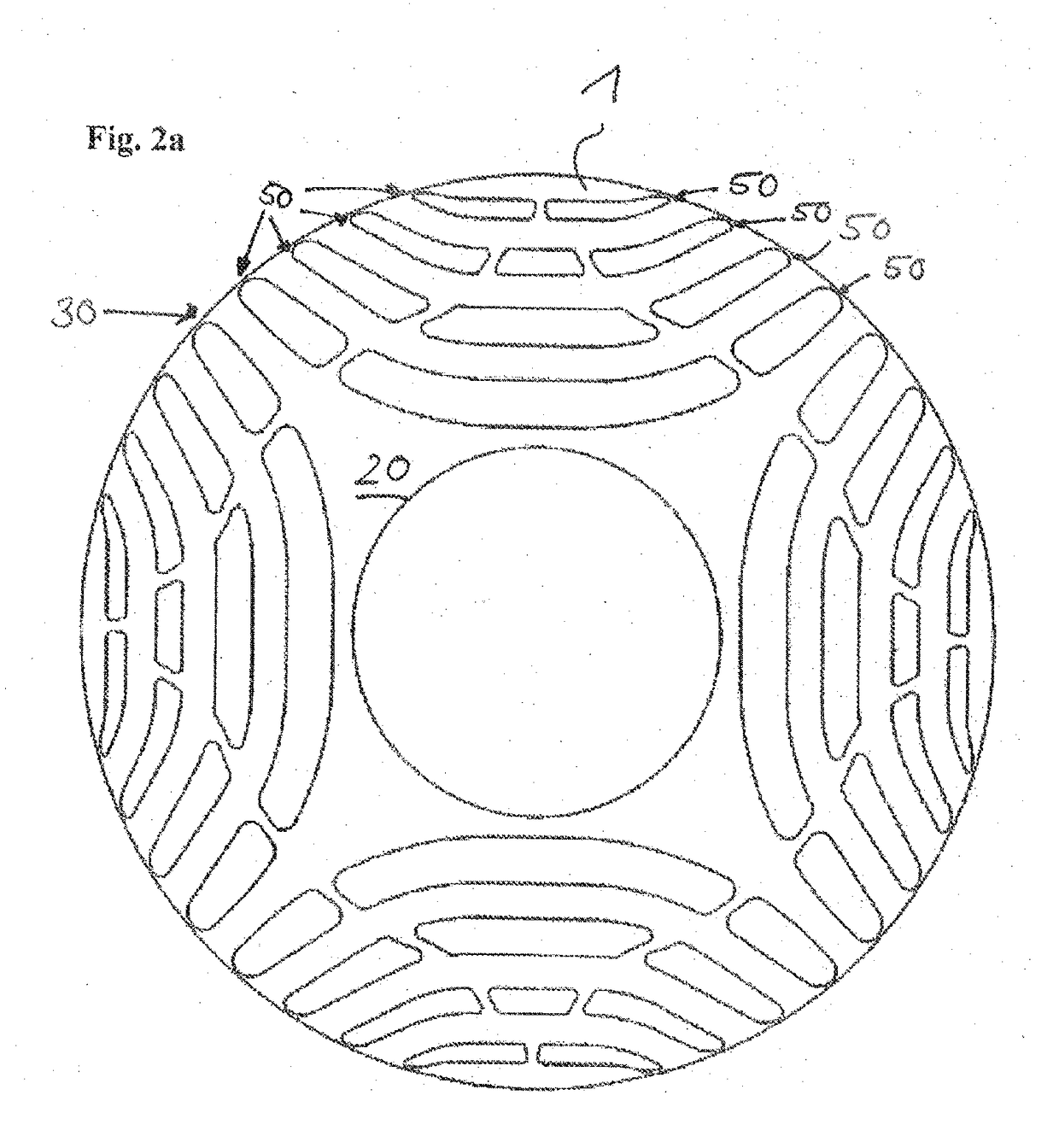Rotor, Reluctance Machine and Method for Manufacturing the Rotor
a technology of reluctance machine and rotor core, which is applied in the direction of dynamo-electric machines, magnetic circuit rotating parts, and shape/form/construction of magnetic circuits, etc. it can solve the disadvantage of motor operation, increase the permeability along the q-axis, and influence the resistance ratio between the q-axis and the d-axis, so as to reduce the influence of the resistance ratio, increase the resistance of the web, and high degree of stability
- Summary
- Abstract
- Description
- Claims
- Application Information
AI Technical Summary
Benefits of technology
Problems solved by technology
Method used
Image
Examples
Embodiment Construction
[0030]FIG. 1 shows a plan view of a rotor lamination 1 according to the invention. A large number of laminations 1 of this kind are stacked one on top of the other in an axial direction, that is to say along the rotation axis 6, for the construction of the rotor according to the invention. In order to simplify the illustration, the stator is not shown. The rotor lamination 1 has a plurality of cutouts 2, 3, 4, 5, which take on the function of flux barriers and the arrangement of which forms a four-pole rotor, the magnetic flux of said rotor being inhibited in the regions with the flux barriers 2, 3, 4, 5. The region with high magnetic conductivity is generally identified as the d-axis, and the region of lower magnetic conductivity is generally identified as the q-axis. The assembled laminated core is mounted on a rotor shaft, not illustrated. The arrangement of the individual flux barriers 2, 3, 4, 5 is based on the technical teaching of U.S. Pat. No. 5,818,140, to which reference i...
PUM
 Login to View More
Login to View More Abstract
Description
Claims
Application Information
 Login to View More
Login to View More - R&D
- Intellectual Property
- Life Sciences
- Materials
- Tech Scout
- Unparalleled Data Quality
- Higher Quality Content
- 60% Fewer Hallucinations
Browse by: Latest US Patents, China's latest patents, Technical Efficacy Thesaurus, Application Domain, Technology Topic, Popular Technical Reports.
© 2025 PatSnap. All rights reserved.Legal|Privacy policy|Modern Slavery Act Transparency Statement|Sitemap|About US| Contact US: help@patsnap.com



